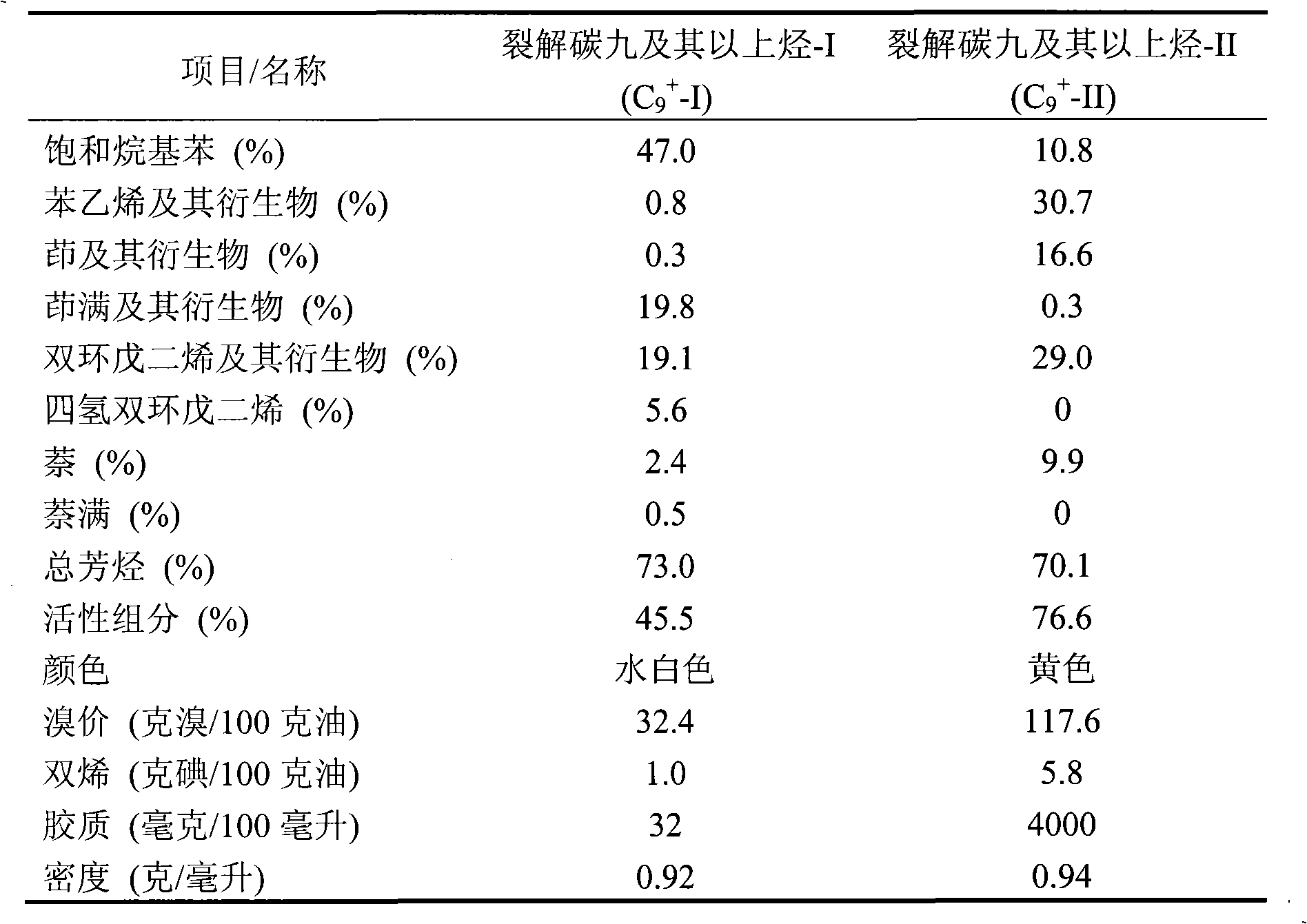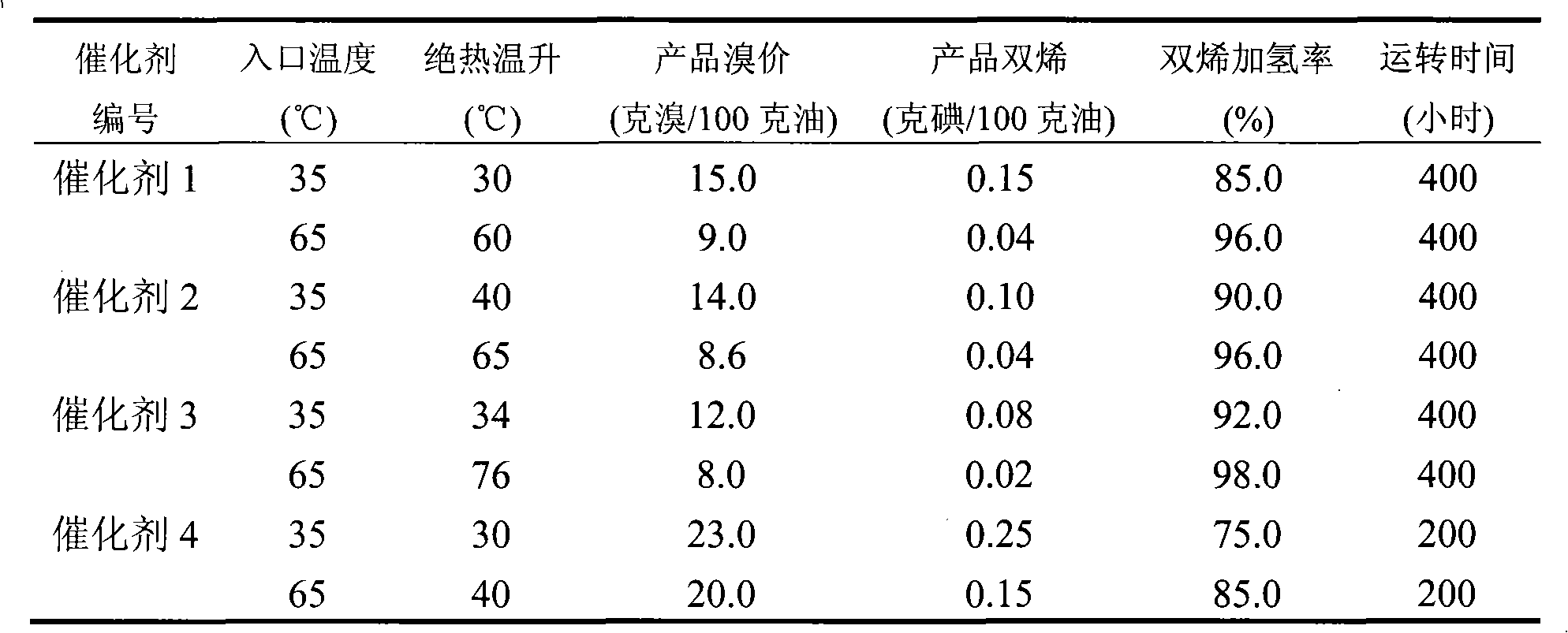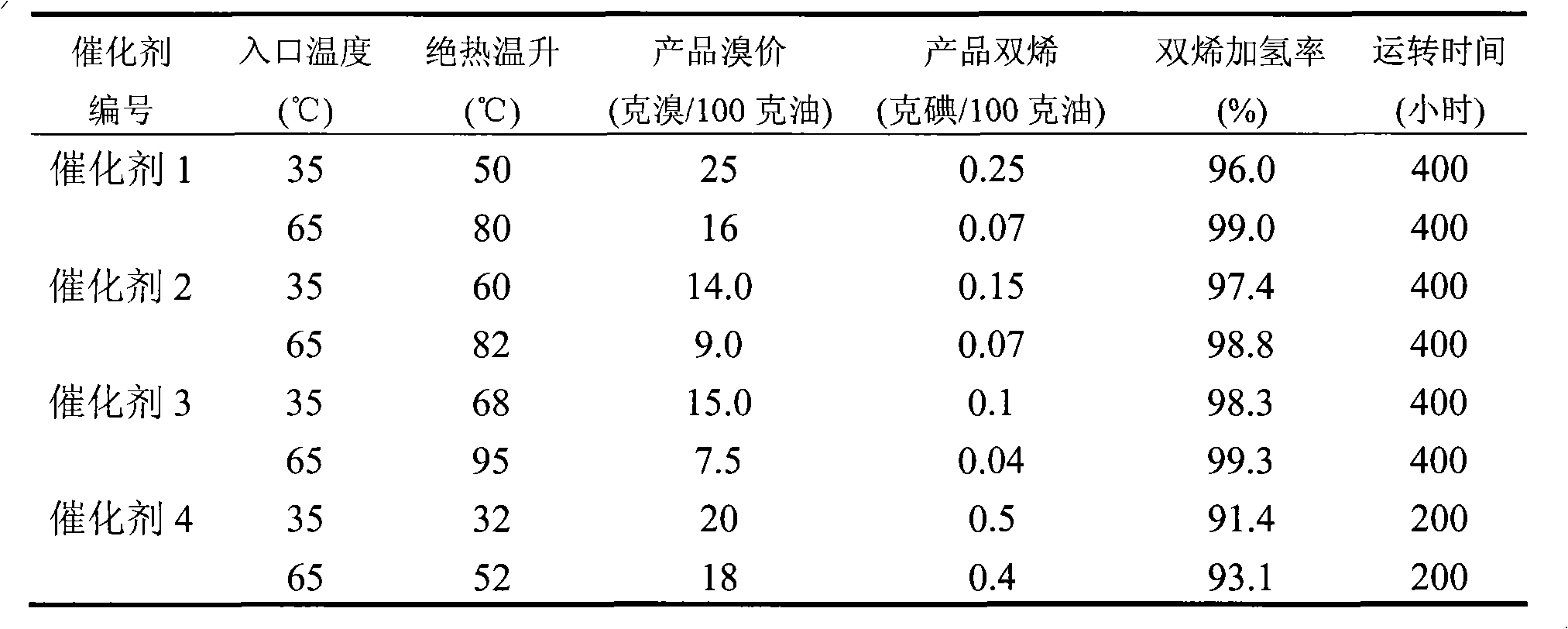Hydrogenation method for cracking hydrocarbon having nine carbon atoms or more
A technology for cracking carbon and hydrogen, which is used in hydrocarbon cracking to produce hydrocarbons, chemical instruments and methods, metal/metal oxide/metal hydroxide catalysts, etc. problems such as low hydrogenation activity, to achieve the effect of improving stability, increasing reducibility, and reducing generation
- Summary
- Abstract
- Description
- Claims
- Application Information
AI Technical Summary
Problems solved by technology
Method used
Image
Examples
Embodiment 1
[0013] With nitric acid in [H + ] / [AlOOH] molar ratio of 0.25, the pseudo-boehmite powder was peptized for 24 hours to obtain an alumina sol with a solid content of 5% alumina, and the temperature of the sol was kept at 60°C. Nickel chloride was dissolved in an appropriate amount of water to obtain a nickel salt solution of 0.10 g nickel / ml. Add an appropriate amount of nickel salt solution into the alumina sol, age at 60° C. for 24 hours, and then dry to obtain the corresponding catalyst precursor. The catalyst precursor was calcined at 400°C for 4 hours to obtain oxidized NiO / Al 2 o 3 The catalyst, with a nickel content of 50.0%, is designated as Catalyst 1.
Embodiment 2
[0015] The preparation and operating conditions of the catalyst are the same as in Example 1, except that the precursor of the nickel salt solution is changed to be nickel acetate, the concentration of the nickel salt solution is 0.04 g nickel / ml, and the nickel content is 50.0%, which is referred to as catalyst 2.
Embodiment 3
[0017] With nitric acid in [H + ] / [AlOOH] molar ratio of 0.25, the pseudo-boehmite powder was peptized for 24 hours to obtain an alumina sol with a solid content of 5% alumina, and the temperature of the sol was kept at 60°C. In terms of molar ratio, basic nickel carbonate:ammonia water:ammonium carbonate=1:6.0:1.5, add an appropriate amount of water to obtain a nickel-ammonia complex solution of 0.10 g nickel / ml. Add the nickel ammonia complex solution to the alumina sol, heat and decompose the complexed nickel ions at 95° C. for 8 hours, and then dry or filter to obtain the corresponding catalyst precursor. The catalyst precursor was calcined at 400°C for 4 hours to obtain oxidized NiO / Al 2 o 3 The catalyst, with a nickel content of 50.0%, is designated as Catalyst 3.
PUM
| Property | Measurement | Unit |
|---|---|---|
| specific surface area | aaaaa | aaaaa |
Abstract
Description
Claims
Application Information
 Login to View More
Login to View More - R&D
- Intellectual Property
- Life Sciences
- Materials
- Tech Scout
- Unparalleled Data Quality
- Higher Quality Content
- 60% Fewer Hallucinations
Browse by: Latest US Patents, China's latest patents, Technical Efficacy Thesaurus, Application Domain, Technology Topic, Popular Technical Reports.
© 2025 PatSnap. All rights reserved.Legal|Privacy policy|Modern Slavery Act Transparency Statement|Sitemap|About US| Contact US: help@patsnap.com



